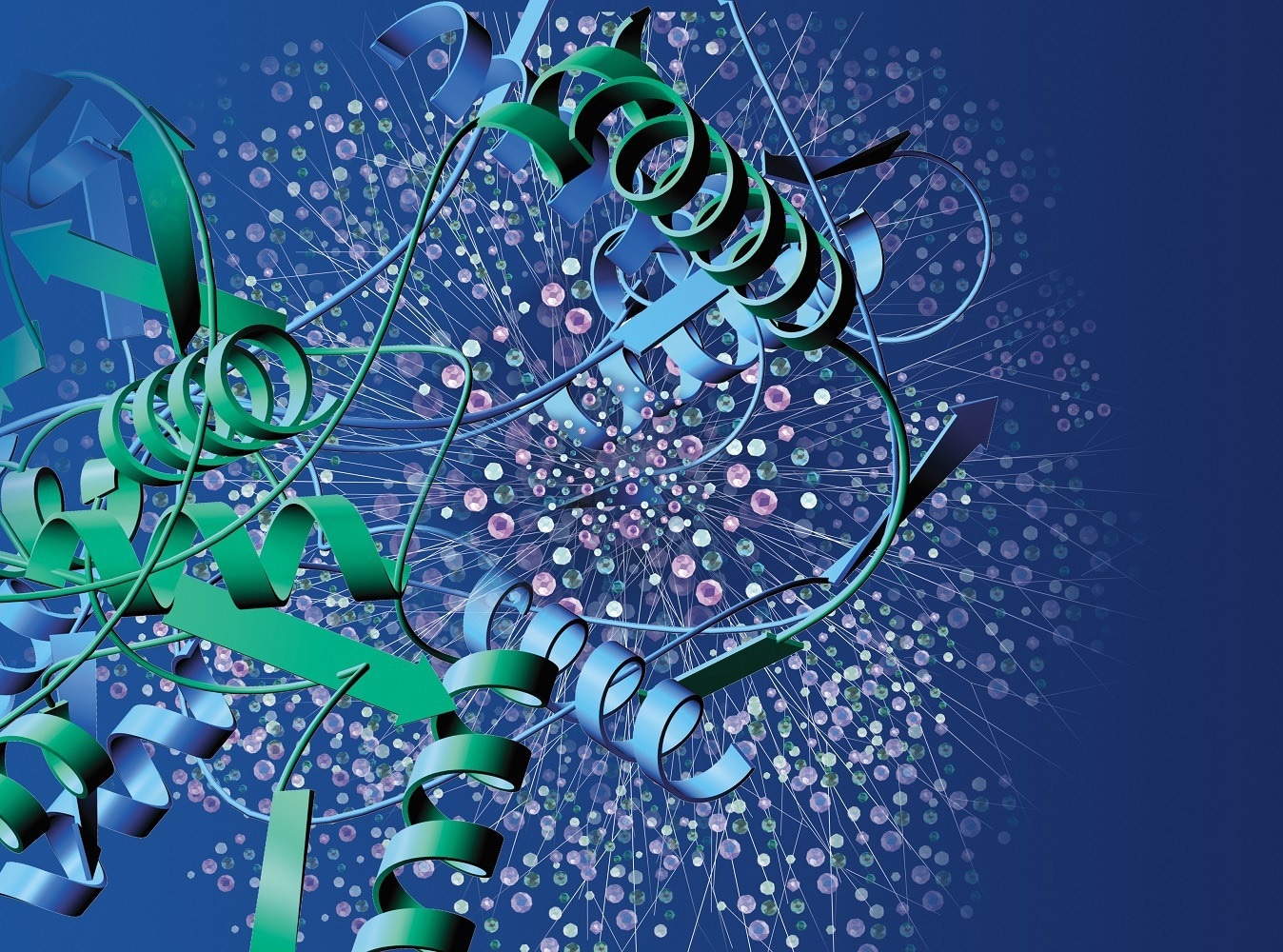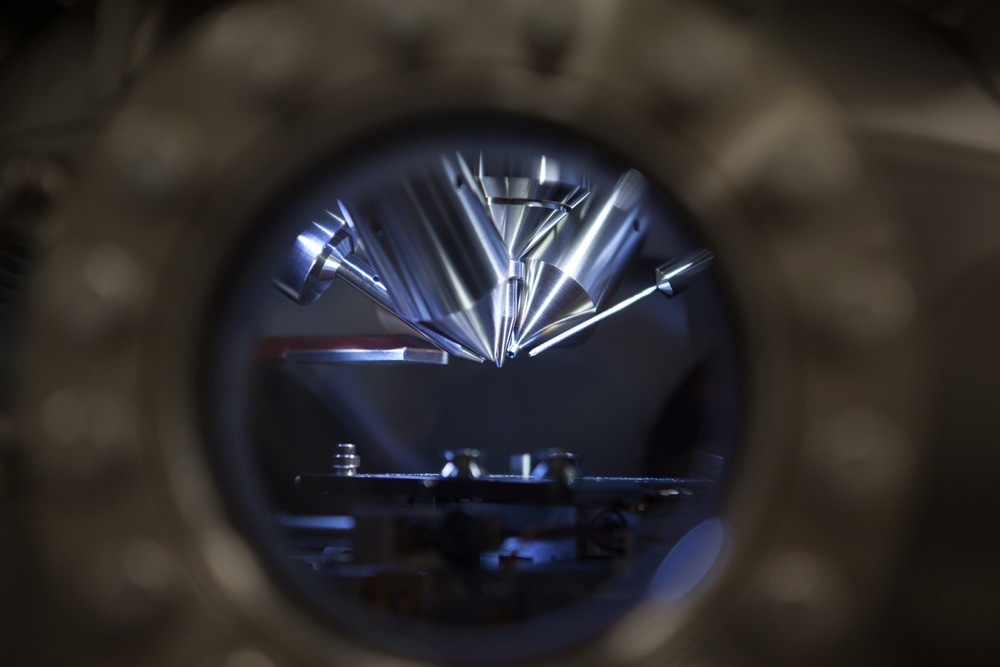Protein characterization has many applications, including in drug discovery and development, and can be achieved using a variety of approaches. Within the last 30 years, various technological advancements have enabled the characterization of proteins while in their native state, providing a wealth of information on protein structure, interactions, and function.

Image Credit: Promotive/Shutterstock.com
What are Native Proteins?
Proteins are organic molecules consisting of one or more chains of amino acid residues. They perform many vital functions within biological organisms, including regulating gene expression, catalyzing chemical reactions, and forming the major structural elements of cells.
20 different kinds of amino acids can combine to form proteins, each with different chemical properties. A protein's specific sequence of amino acids is referred to as its primary structure and differs between each protein type.
The primary structure of a protein drives the formation of intermolecular bonds between the amino acids, such as hydrogen bonds and ionic interactions, consequently folding the linear chain into a specific three-dimensional shape.
Native proteins remain in their functional folded shape, unaltered by denaturing agents such as enzyme reactions and heat.
Why is Protein Characterization Important?
Protein characterization refers to identifying a protein's physical, chemical, and biological properties. This process is vital to drug discovery, development, and manufacturing.
Structural characterization of protein-based drugs provides information on whether the drug product will be stable and of sufficient quality to be launched. As stress-induced changes in the structure of these drugs could present a safety risk and result in a loss of efficacy, it is important to demonstrate that protein structure is not altered by any stage in the formulation process.
Protein characterization further improves safety by allowing for the monitoring of protein aggregation. This occurs when proteins bind together and can result in incorrect drug dosages or fatal immune responses.
It also plays a critical role in disease control and prevention by helping us to understand the biological processes that lead to disease. For example, protein characterization can identify post-translational modifications that disrupt normal biological processes and lead to diseases such as breast cancer.
Additionally, protein characterization enabled scientists to gain an in-depth understanding of the SARS-CoV-2 proteins during the COVID-19 pandemic, which ultimately enabled the development of effective vaccines.
Characterizing Proteins with Mass Spectrometry
Protein analysis can be conducted using a variety of techniques. Of these techniques, mass spectrometry has emerged as one of the most comprehensive and versatile.
During mass spectrometry, samples are converted into gas-phase ions, which are subsequently characterized according to their mass-to-charge ratios and relative abundances. A graphical representation of ion mass-to-charge ratio versus abundance is then produced. This graph is known as a mass spectrum and can be used to determine protein identity and structure.
There are three main experimental approaches to protein mass spectrometry: bottom-up, top-down, and native mass spectrometry. In traditional 'bottom-up' analysis, the identification of proteins occurs at the peptide level.
Proteins are extracted and enzymatically or chemically digested to obtain masses of individual peptides. The constituent protein can then be reconstructed from the identified individual peptide fragments.
This method is the most widely used approach for protein characterization; however, only a small and variable fraction of the total peptide sequence of a protein can be recovered using this technique.
This means that bottom-up analysis produces a low percentage coverage of the protein sequence, and consequently, a significant amount of information about alternative splice variants and post-translational modifications is lost.
In top-down analysis, there is no digestion step. Intact proteins are ionized by either matrix-assisted laser desorption/ionization or electrospray ionization and then introduced to the mass analyzer. This allows for in-depth sequencing, the discovery of novel proteoforms, and the quantification of disease-associated post-translational modifications.
More recently, technological advancements have facilitated the characterization of proteins in their native state using native mass spectrometry.

Image Credit: Intothelight Photography/Shutterstock.com
Native Mass Spectrometry
In native mass spectrometry, proteins and associated complexes are transferred from a three-dimensional existence within a condensed liquid phase into the gas phase via electrospray ionization. The non-covalent interactions and native state of the protein complexes are largely preserved, thereby providing information on associated biological action and functionality.
To achieve this, the native protein of interest must be stored under physiologically compatible conditions. In top-down approaches, there is no requirement to maintain non-covalent interactions and 3D protein structure. Therefore, denaturing conditions are used, in which proteins are unfolded and the 3D structure is lost.
When characterizing native proteins, samples must be prepared in non-denaturing conditions, which are often sample specific. This means that native mass spectrometry can provide us with information on protein-ligand complexes, protein-protein complexes, post-translational modifications, and protein folding.
This information has many applications, particularly in drug discovery and development. For example, non-covalent interactions between small drug molecules and disease-related proteins regulate a range of processes involved in disease treatment. Therefore, native mass spectrometry can be utilized to evaluate these interactions and facilitate the discovery of targeted drugs and precision therapies.
Native mass spectrometry also allows for the characterization of intrinsically disordered proteins, challenging analytes such as membrane proteins, and large complexes like virus capsids, which would otherwise be difficult to study.
Sources:
- Zhou, M., Lantz, C., Brown, K.A., Ge, Y., Paša-Tolić, L., Loo, J.A., and Lermyte, F. (2020). Higher-order structural characterisation of native proteins and complexes by top-down mass spectrometry. Chemical Science, 11(48), pp.12918-12936. https://doi.org/10.1039/d0sc04392c
- Cui, W., Rohrs, H.W. and Gross, M.L. (2011). Top-down mass spectrometry: recent developments, applications and perspectives. Analyst, 136(19), pp.3854-3864. https://doi.org/10.1039/c1an15286f
- Tamara, S., den Boer, M.A. and Heck, A.J. (2021). High-resolution native mass spectrometry. Chemical Reviews, 122(8), pp.7269-7326. https://doi.org/10.1021/acs.chemrev.1c00212
- Leney, A.C. and Heck, A.J. (2016). Native mass spectrometry: what is in the name? Journal of the American Society for Mass Spectrometry, 28(1), pp.5-13. https://doi.org/10.1007/s13361-016-1545-3
Further Reading
Last Updated: Feb 20, 2023